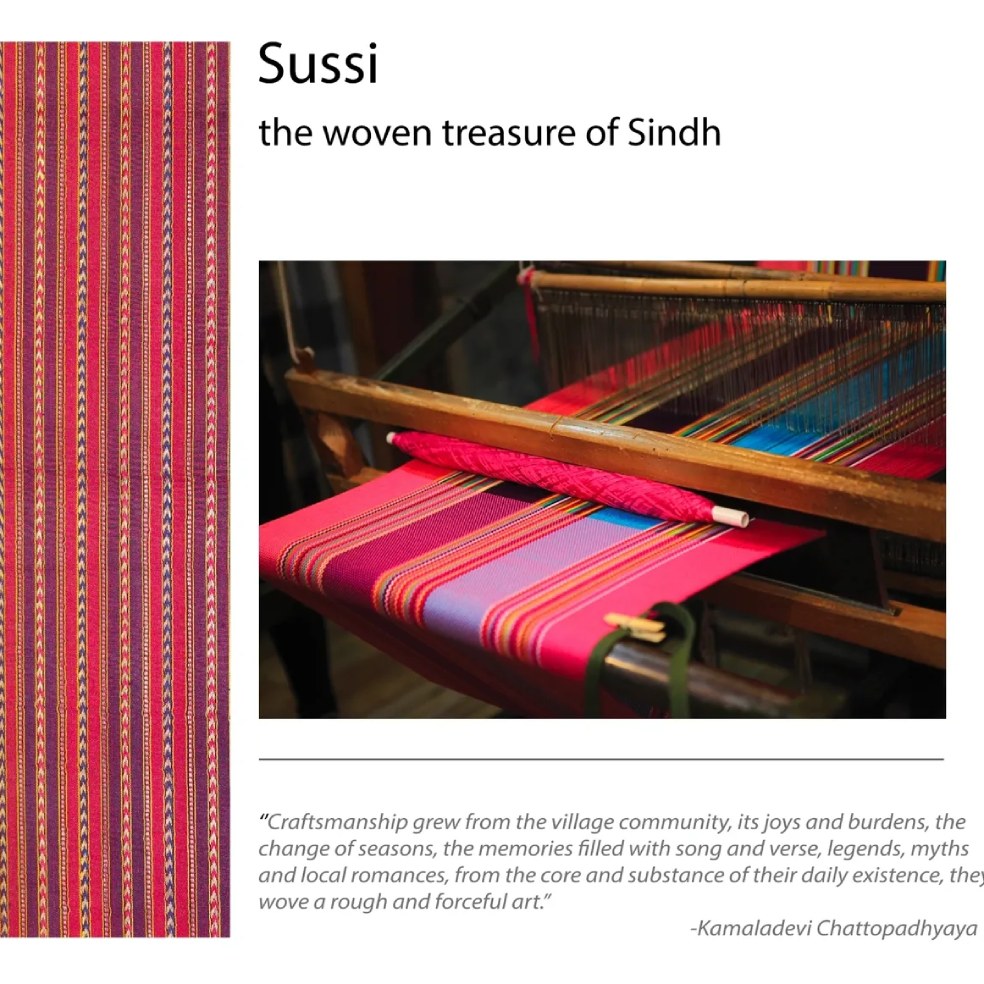Textile Concepts for Public Spaces

Design Methodologies
Research I Design Development I Fabrication I
Tools
Interviews
Sketching
Product Mapping
Space Research
Space Explored: Heritage site Shalimar Gardens
Designing for space and people involves considering various factors, including human behaviours, technological constraints, safety, and functionality.
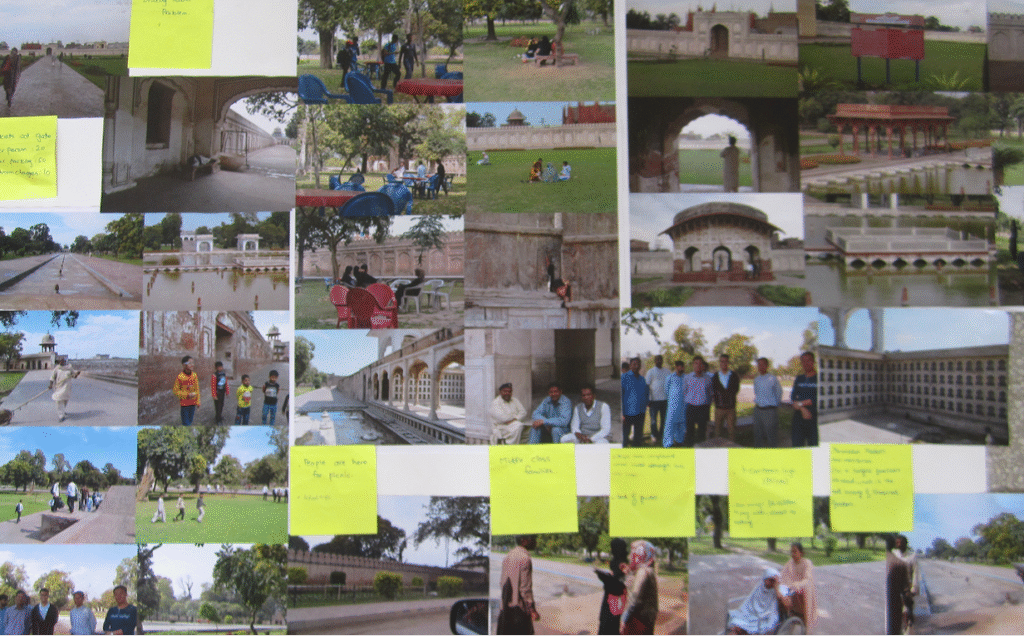
Research Methodology
On site Visit
Surveys
Primary Photography
Learnings:
Historical Richness
The site holds significant historical value.
Implication: Preservation is vital; limited scope for extensive construction.
Visitor Decline:
Decrease in visitor numbers over the years.
Implication: Understanding reasons and addressing to revive interest.
Mall Play Areas Impact:
Shift in cultural preference towards mall play areas.
Implication: Introduce engaging activities within the gardens.
Children’s Activities Gap:
Lack of engaging activities for children.
Implication: Identify and introduce child-centric activities.
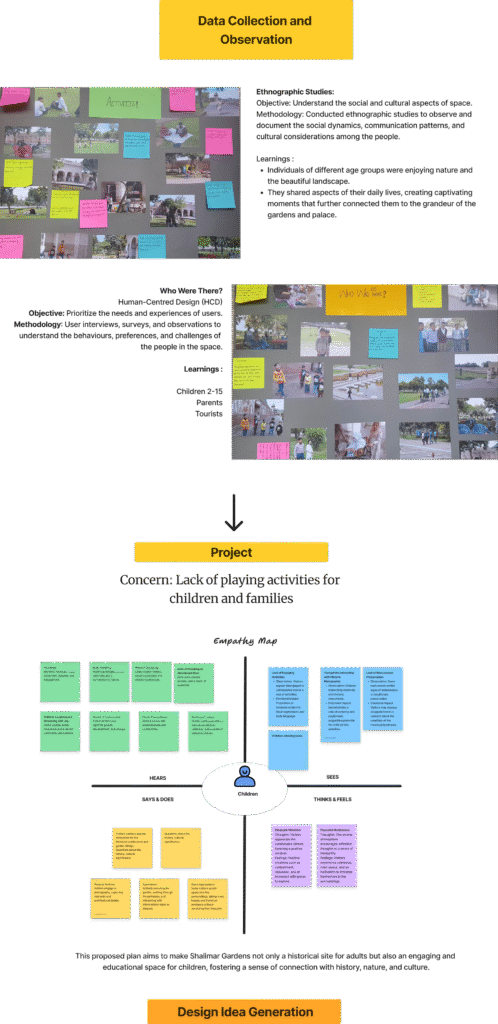
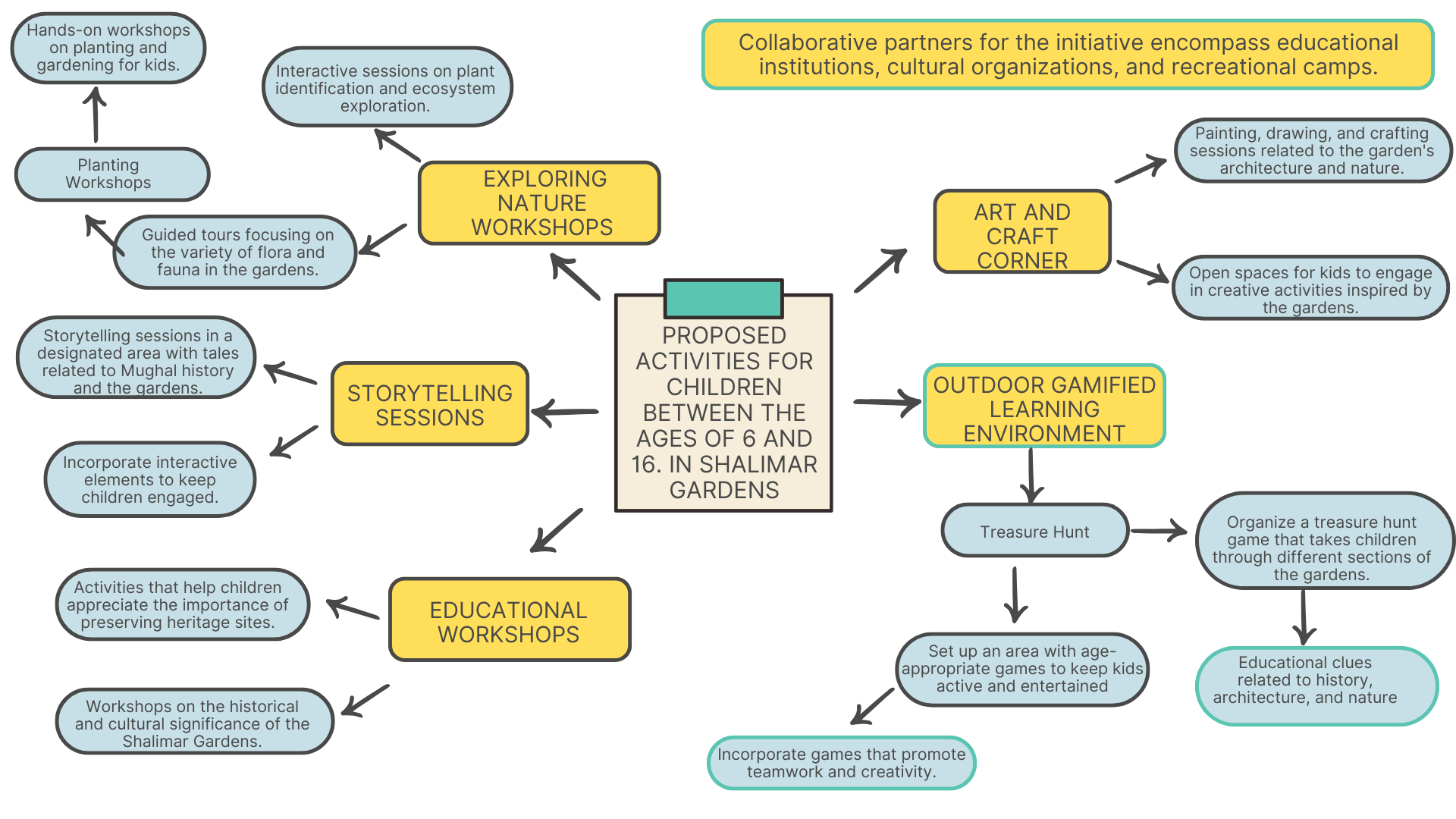
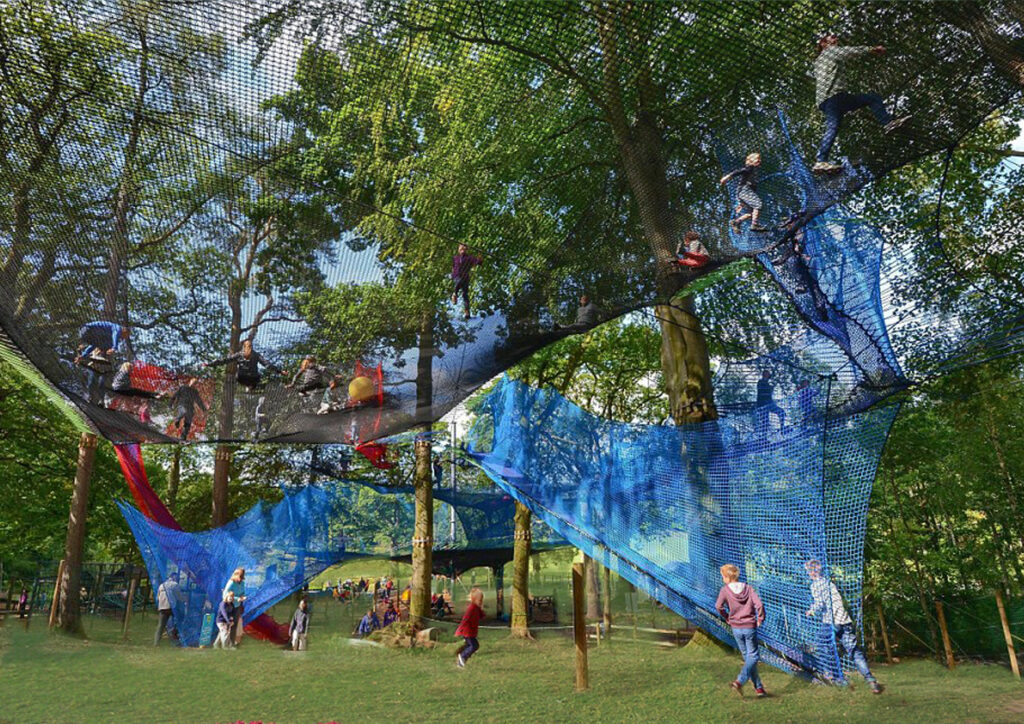
Far more than a physical structure, the playdium serves as a catalyst for experiential learning, imaginative play, and environmental awareness. Designed from durable, environmentally conscious materials—particularly sturdy nylon canvas nets—the installation upholds principles of sustainability and minimal intervention, ensuring the garden’s historical integrity is preserved.
To fully realize its potential, the project invites collaboration with local schools, museums, and cultural institutions to co-develop educational programs and interactive workshops on heritage, ecology, and design thinking. Through strategic partnerships and community engagement, the initiative seeks to foster deeper connections between children and their cultural environment, transforming Shalimar Garden into a living classroom that nurtures curiosity, play, and learning for all ages.


